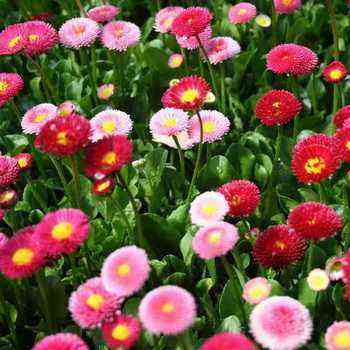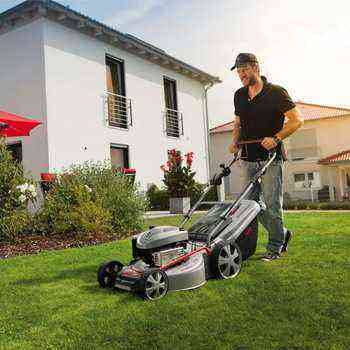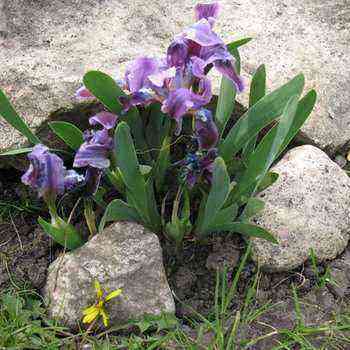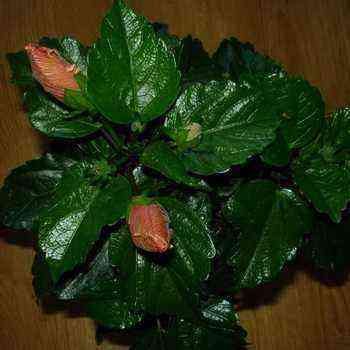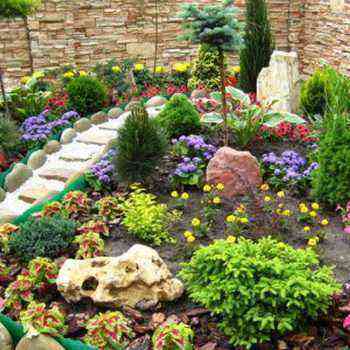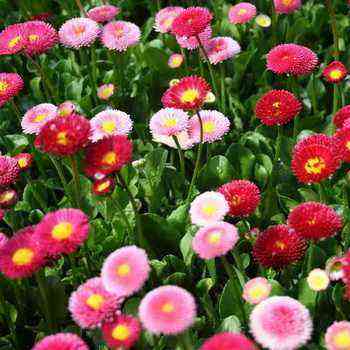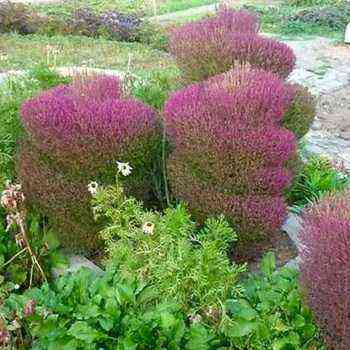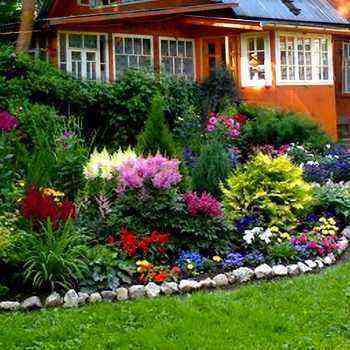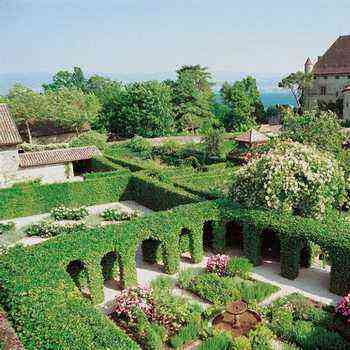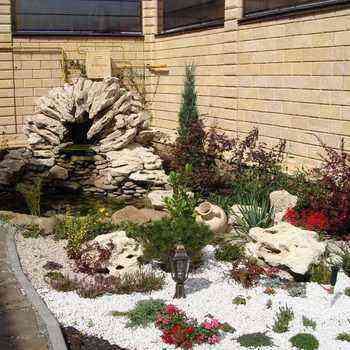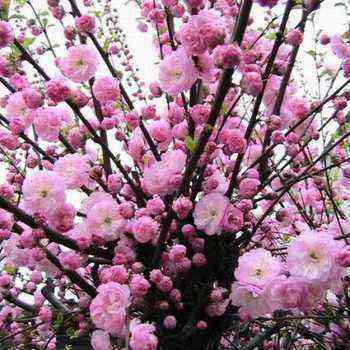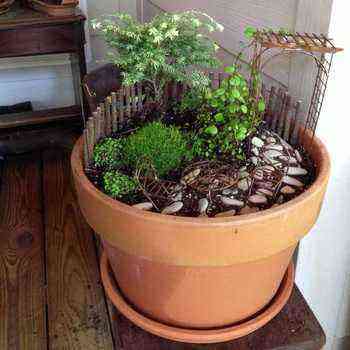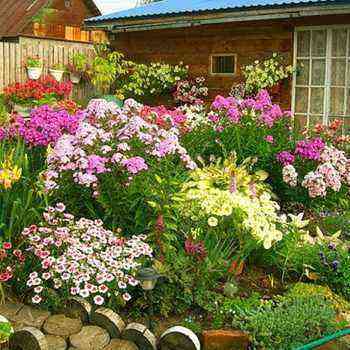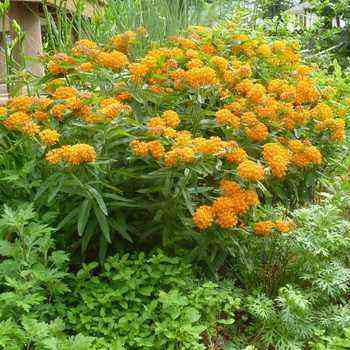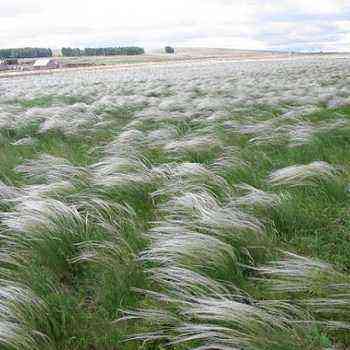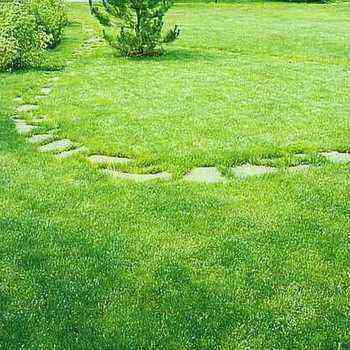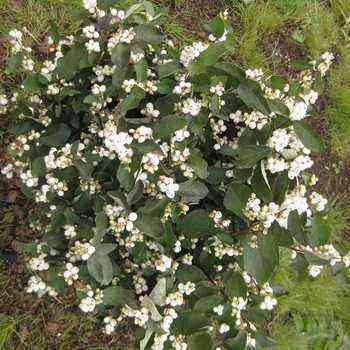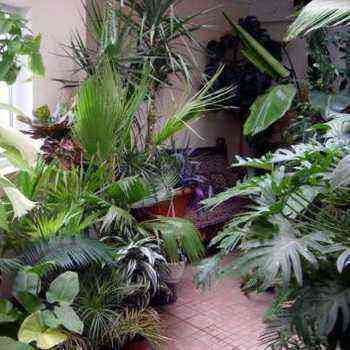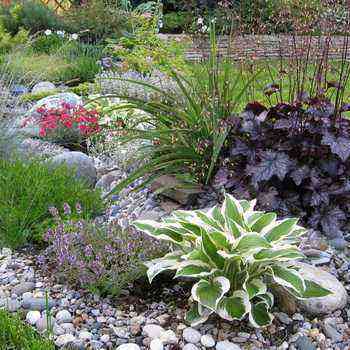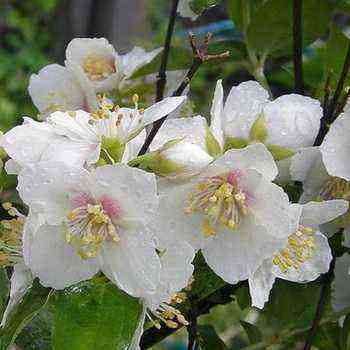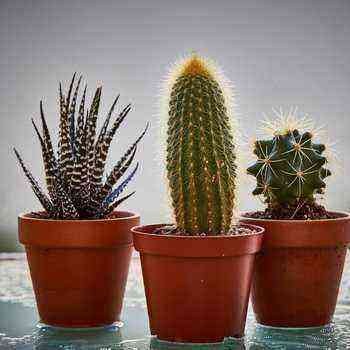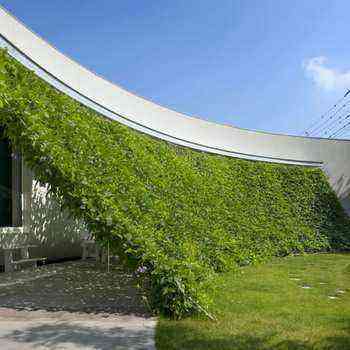 Many summer residents do not stop at arranging a club, flower beds and mixborders on personal plots. A self-made pond in the garden is the crown of original design art. It is important here not only to know how to make a pond, a decorative swamp or a stream in the garden. It is very important to imagine how to arrange it correctly so that your body of water does not become a banal refuge for tadpoles, but is the pride of the site.
Many summer residents do not stop at arranging a club, flower beds and mixborders on personal plots. A self-made pond in the garden is the crown of original design art. It is important here not only to know how to make a pond, a decorative swamp or a stream in the garden. It is very important to imagine how to arrange it correctly so that your body of water does not become a banal refuge for tadpoles, but is the pride of the site.
Design of artificial decorative ponds in the garden
Before making a garden pond with your own hands, determine which style of water device is best for your garden. If in the architecture of the house and the organization of the surrounding space, a pronounced geometry can be traced, and a stone is used in the decoration for facing the facades, it is appropriate to organize a formal reservoir from it. It can be a lake with a fountain, a canal effectively cutting through beautiful paving, as well as a mascaron-type wall fountain will do.
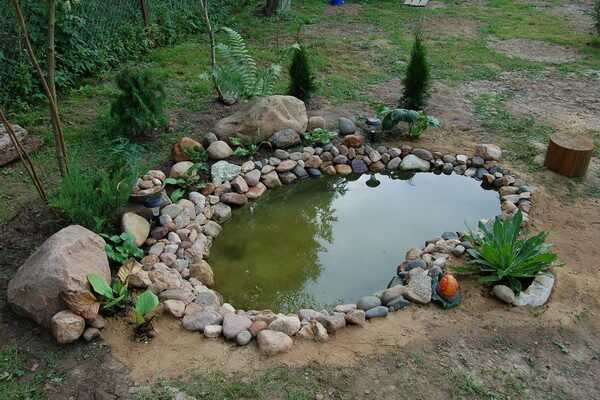
If the house is closer to country style, the design of garden ponds can be made in the form of a quiet stream or pond, similar to natural. But a small reservoir of simple geometric outlines is also suitable.

The design of a reservoir in the garden of the correct geometric shape can be not only part of a composition made in the classical spirit, but also a fragment of a landscape idea. A successful mix of styles sometimes gives amazing results, for example, lush vegetation, will soften the strict impression of a reservoir of the correct geometric shape. A beautiful sculpture on the shore of a decorative reservoir in the garden will give this place a special mood.
Arrangement and design of reservoirs in the garden
When arranging a reservoir in the garden, remember that water can act in two qualities – standing, forming a horizontal surface and creating an atmosphere of relaxation and peace, or moving, murmuring, maybe even noisy, these are streams, waterfalls, fountains that give not only visual, but also sound effects.
How to make a reservoir in your garden and how does the arrangement of all these garden mini-arteries differ? From a technical point of view, all projects with moving water are closed cycles in which water moves in a circle. Most of it is stored in a storage tank, the role of which can be played by a pond, a fountain bowl, even a barrel dug into the ground, disguised with stones laid on a grate, and a pump gives it movement, delivering it through a hose to the required place at the desired height, from where the water flow drains and falls back into the storage tank.

A do-it-yourself fountain in the garden is an element of regular planning; there are no fountains in nature, but a fountain in the form of a spouting key or a bell in a tiny pond looks charming. The smaller the fountain, the closer to the house or to the resting place it should be; you should not plant plants near a large fountain.
It is logical to do a waterfall or a stream in the garden with your own hands if there is at least a small height difference. The movement of water can be arranged on an absolutely flat area by organizing a slight slope.
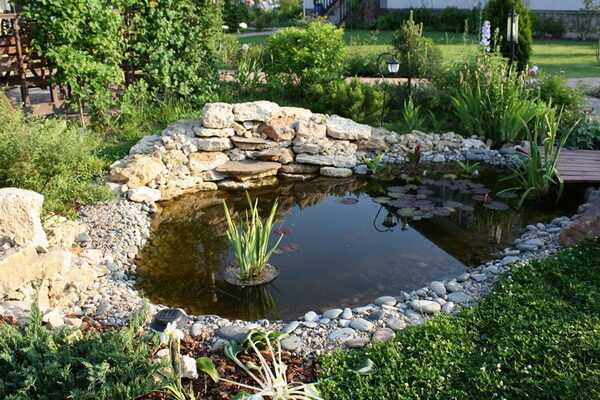
Artificial ponds in the garden not only decorate the site, but also connect various garden compositions to each other, they are able to revive any landscape, surprisingly they are in a place near the recreation area.

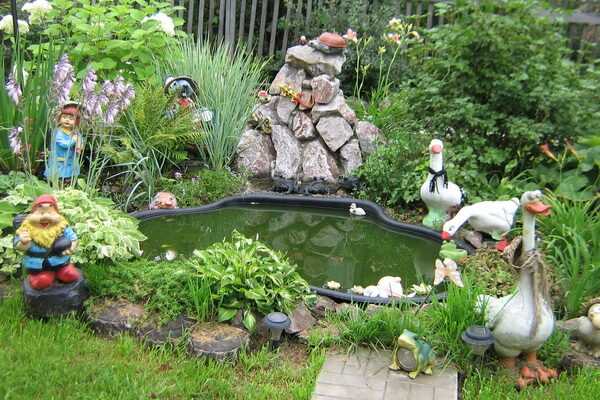
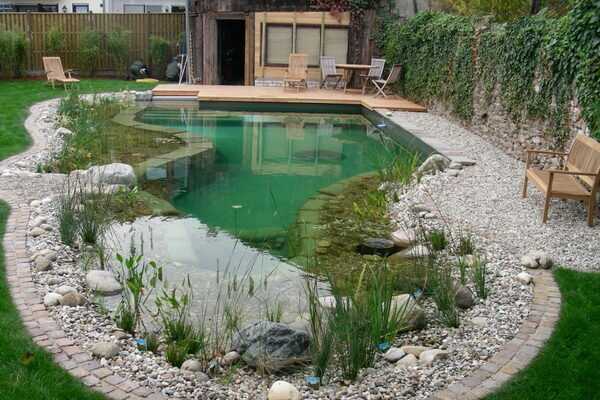
Look at the photo of garden ponds: the smooth surface of the pond blowing cool, the murmur of a stream or fountain, the rustle of miscanthus near the pond, the play of dragonflies and water striders, the movement of a flock of goldfish – staying in such a place will allow you to relax, calmly think, let forget all the problems for a while.
The optimal size of the pond in the garden
Are there ideal sizes of the pond on the site and the shape of the reservoir? Definitely not. A waterway that looks wonderful in one garden may look ridiculous in another environment, next to another house. Do you have enough space to fit a pond with a minimum size of 3 m2, because only with such an area, biodynamic equilibrium can be established in the pond, that is, the water will be able to purify itself? When constructing a reservoir in the garden, its location and size should be thought out very carefully. Where to plan it in the garden? If you build a pond in an open, sunny place, algae will begin to thrive there. In the deep shade, nymphs will not bloom, which should be illuminated by the sun for at least 5 hours a day. It is important to design the pond in an aesthetically pleasing location. The tree branches hanging over the water are very picturesque, but in the summer you will have to regularly remove the leaves falling into the pond that clog it, and in the fall cover the pond with a fine mesh.
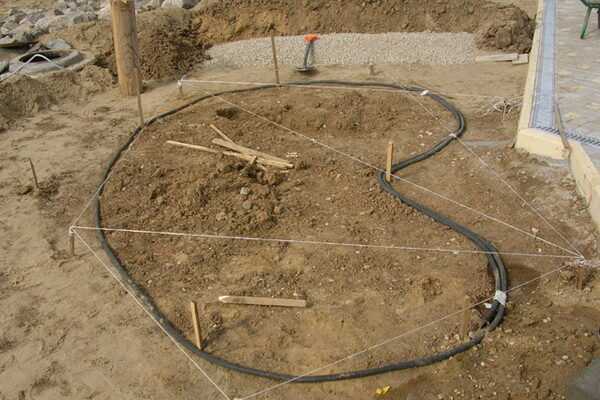
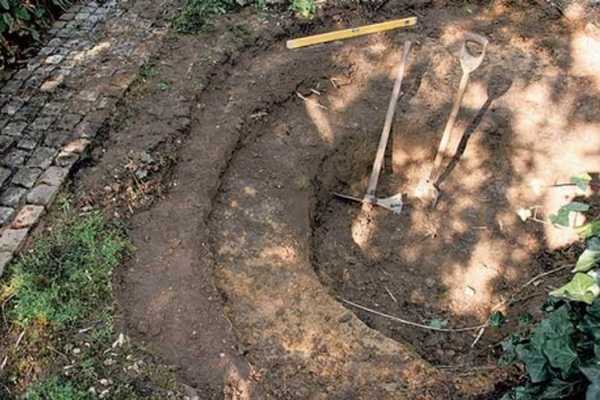
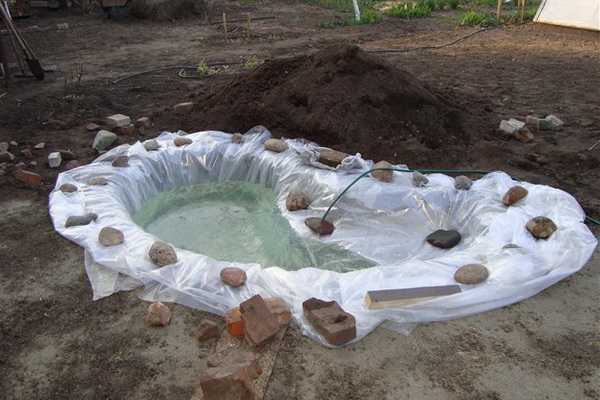
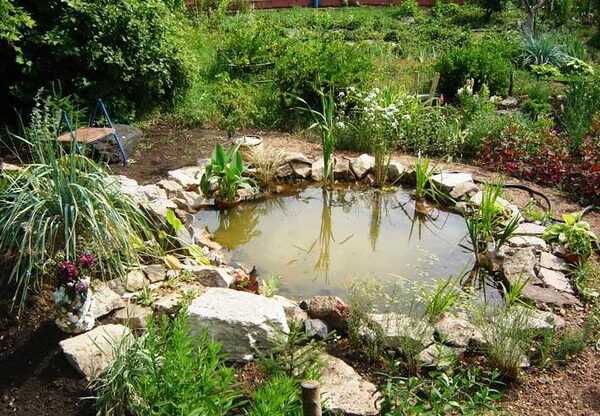
Before you make a pond in the garden with your own hands, you should think about which side will be the approach to the reservoir, because to care for it, the entire coastal zone must be accessible. When decorating ponds in the garden, you need to consider that this is a garden decoration, it is good if it is visible from the house. There should be a place to rest near the reservoir, at least a bench, sitting on which you can admire the life happening in the pond, dragonflies, fish, and aquatic plants. A path should lead to the bench, the best view of the pond should open from the bench.
The optimal size of a pond in a garden should be such that its area is proportional to the area of the garden and the house, not too large or too small. If the made pond turned out to be too small, there is a technique with which you can try to rectify the situation – to attach another pond to the already made pond, laying a bridge along the border between them so that the two ponds look like one. At the same time, it is very convenient to swim in one, and in the other, for example, to breed nymphs.
How beautiful to arrange an artificial pond in the country in a plastic form
For beginners, it seems easier to make a pond from a ready-made plastic form than a pond using flexible waterproofing. This is an illusion. At first in the store, the forms seem huge, but after installing them in the ground, they look about half the size, and when filled with water, they look very tiny. Such containers are good for raised reservoirs of clear geometric shapes, for installation on slopes.
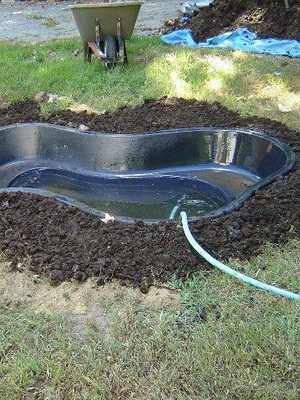
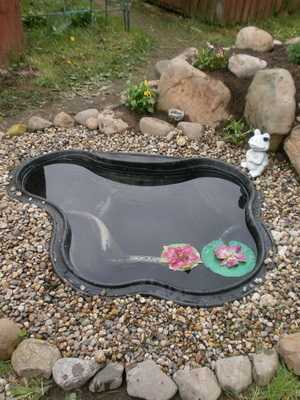
The most durable plastic forms for a pond are fiberglass structures, they are not inferior in strength to containers made of reinforced plastic, but the edges of the latter can deform if the structure is not provided with reliable external support on the ground. These forms are imported and quite expensive. Containers made of ordinary plastic are cheaper, but they are not rigid enough, often have deformed edges, and their dimensions are small. Only black forms are suitable for reservoirs.
Often, plastic molds for a pond in the country after filling with water are deformed, this is due to improper filling of the gap with soil between the wall of the pit and the wall of the mold.
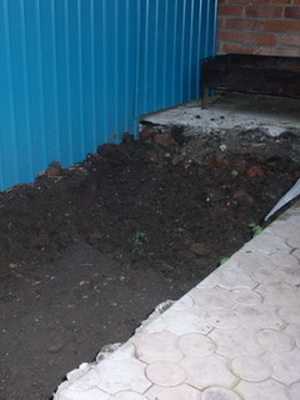
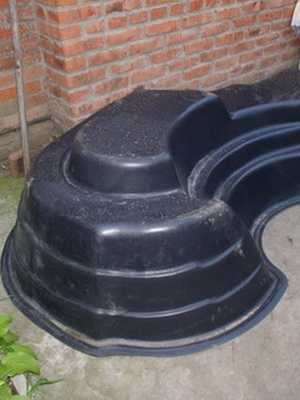
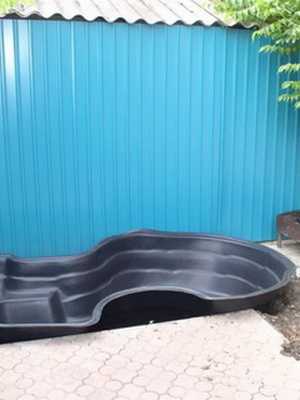

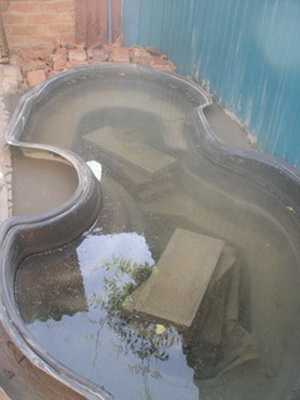
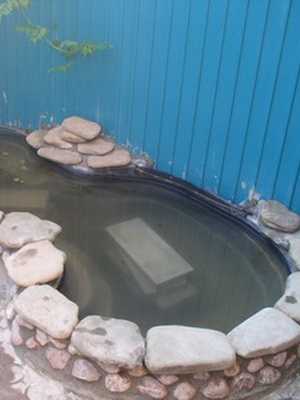
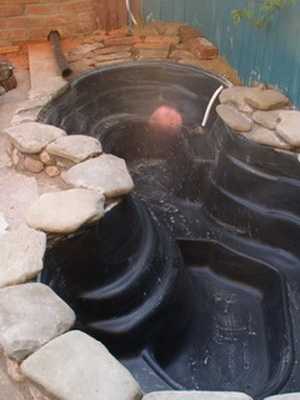

It is correct to do this: pour 5-7 cm of sand on the horizontal base of the pit, tamp it tightly and install a plastic form, then pour 10-15 cm of water into it, then pour sand into the gap between the walls of the pool and the pit to a height of about 20 cm, watering it with water from a hose, or pour a mash of earth, sand and water into the gap and wait until the liquid mass hardens. Then pour another 10-15 cm of water, and in the gap – sand with water or a chatterbox, repeating this until the pool is completely filled with water, and the gap – with sand or soil. As a result of these actions, the form will stand rigidly in the ground, and its coastline will be in the horizontal plane.
Water from plastic molds for an artificial pond for the winter is never drained, this is an unnecessary and even harmful operation, in the spring the empty bowl will be squeezed out and crumpled.
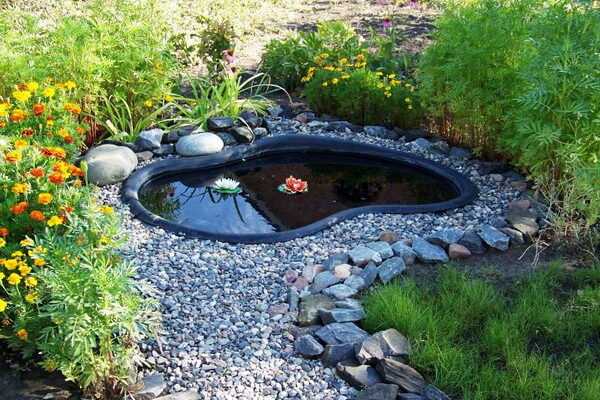
The best way to decorate a plastic pond in a garden is to decorate it with rockeries or a flowering retaining wall. In modern gardens, a pond is most often arranged, in which aquatic plants grow, fish and frogs live. The shape of a natural pond should be as smooth as possible. The smaller the pond, the less there should be all kinds of bends, therefore, reservoirs in rigid forms look so unnatural, the “banks” of which are excessively indented and resemble curly cookies rather than a natural structure. If such a body of water has turned out, the situation can be improved by a thoughtful planting of plants that camouflage the unnaturalness of the banks, in plastic form. Do not forget that an excessive amount of coastal plants, especially large ones, visually significantly reduces the size of the reservoir.
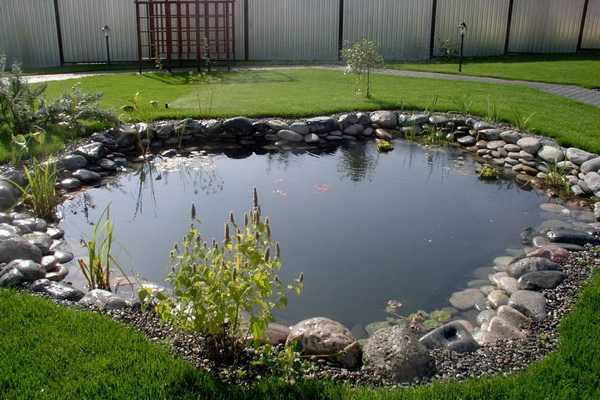
Another difficult task is the design of the shores of garden ponds: a lawn can come close here, in some places of the coastal zone you can plant coastal plants such as loosestrife, loosestrife, marsh and Siberian irises, daylilies, etc. The choice of coastal plants is inexhaustible, your taste, refined the study of nature and the best specimens – this is your judge.
In the process of decorating a pond in a garden, remember that there should not be a lot of vegetation around a geometric reservoir, just one large plant of an architectural shape, for example, a marsh iris clump or a large hosta, is enough.
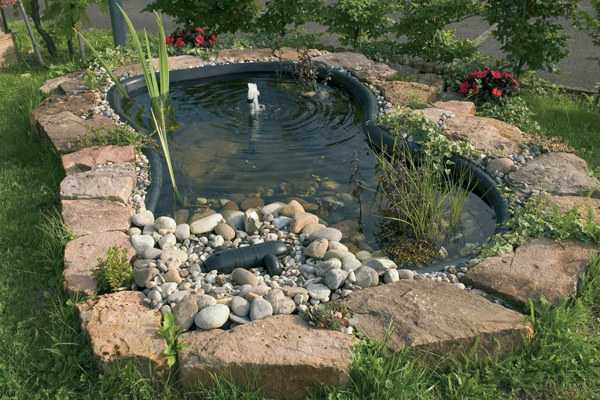

Look at the photo of how to beautifully decorate a pond in a garden in a regular style: around it are quite logical shorn shrubs and plants in containers, if there is no fountain, you can plant a nymph.
How to make and decorate a pond with an island in the garden with your own hands
To create an island, you first need to remove the soil, as when creating an ordinary reservoir, but at the intended location of the island, you need to remove it less or not even remove it at all. The edges of the island can be reinforced with stones, if necessary, concrete mortar can be used to secure them.
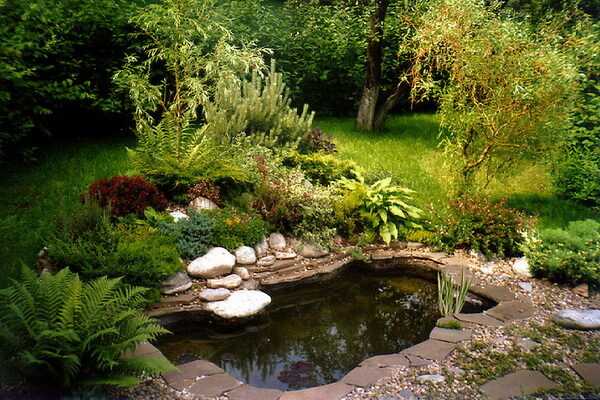
Not a bridge can lead to the island, but a step-by-step path made of stones. In the place where it is supposed to be laid, the depth should not exceed 30cm. The path should not be straight, but winding, but not excessively, it will be smooth and comfortable, so stones for it are selected large and flat 10-15 cm thick.The surface of the stones should be at least 10 cm above the water level, they are placed on supports ( foundation) made of concrete blocks or bricks. Each stone has its own individual stand, to which it is attached with concrete, the stand should not be noticeable, everything should look natural.
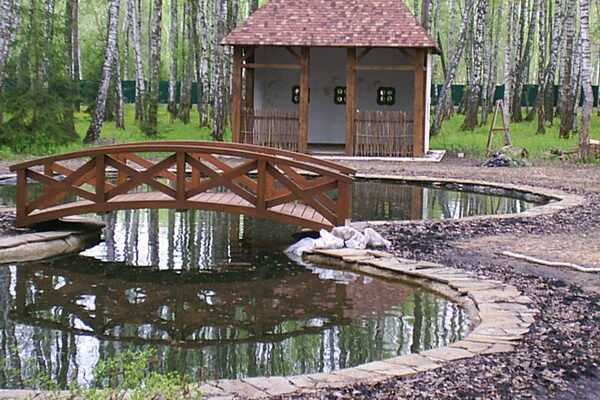
There is also a successful example of creating a large reservoir with a charming island in the Moscow region. An artificial butyl rubber pond occupies a large part of the garden, with a water surface of about 250 sq. m. It is made on a plot of about 15 acres, located in the middle of a dense birch forest, with a spacious one-story wooden house for permanent residence. You can get to the island by going through a pretty bridge. When arranging the garden, extra trees were removed, a lot of birch and alder were left behind.
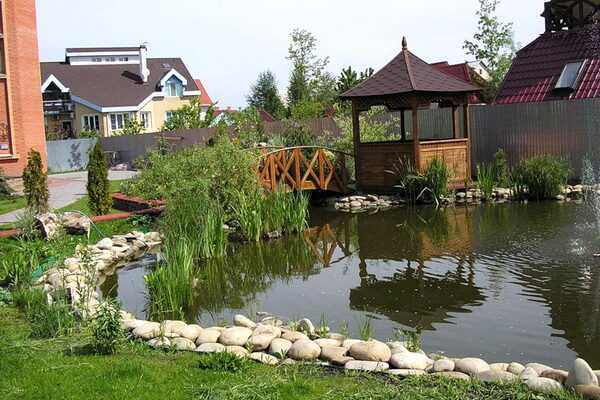
As you can see in the photo, the shores of the pond in the garden, made by hand, are covered with flat pebbles of white and various shades of gray. The blind area of the house is made of the same pebbles. It perfectly matches the paving of gray and gray-pink paving stones and the cladding of the basement of the house made of limestone.
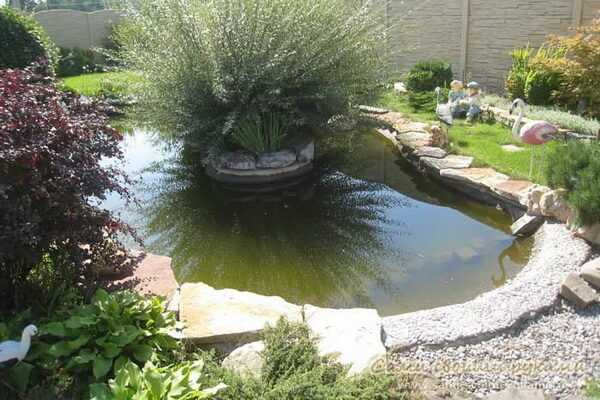
On the diagonal of the plot in relation to the house, there is a bathhouse built of the same materials and in the same style as the house. A walkway was built near the bath so that you can plunge into the water after the steam room, in this place the pond is deep enough (1,6 m). Thanks to the pump, the water never freezes here, although they skate on the opposite side of the reservoir in winter.
You can move freely around the pond, you can admire it, not only walking along the path, but also contemplating the landscape from the closed veranda of the house and the large windows of the relaxation room in the bathhouse.
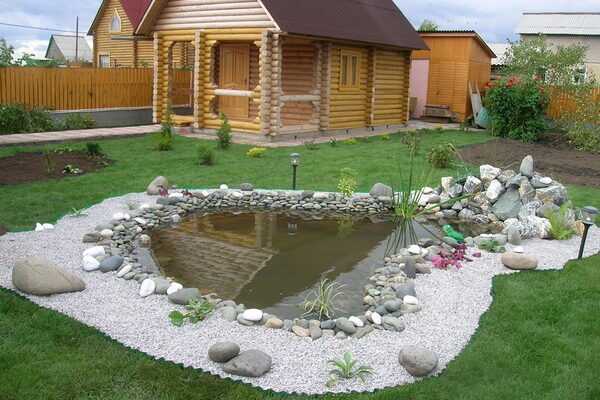
Pay attention to the photo, how to arrange a pond in the garden: a calm, pacifying atmosphere can be emphasized by a few plants with foliage of an interesting shape and texture, except for birches. It can also be deciduous shrubs (spireas, barberries), conifers, decorative deciduous perennials (hosts, ferns). White birch trunks brighten the area, make it elegant. Water, paving and stones occupy a large area, shrubs and decorative deciduous perennials predominate among the plants, so caring for such a garden is not difficult and does not require much time. Two pumps are installed under the walkway, forcing the water to move quietly, and next to it are skimmers that collect falling leaves. Approximately every two years, the water goes down, the bottom and stones are cleared of silt and settled debris.
Such a project is good for those who like to sit quietly, enjoying the impressions of the garden or some of its details.
Design of garden ponds with a photo: decorative swamp
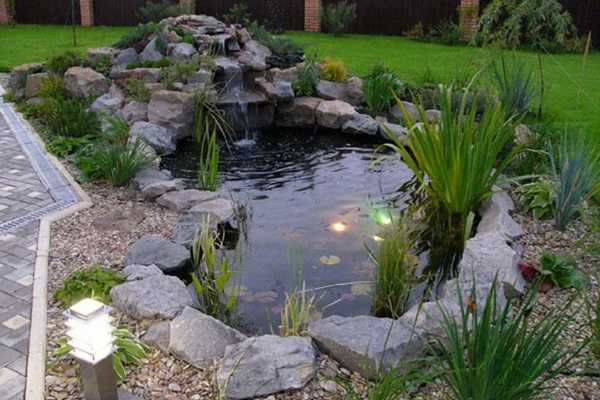
The soil in a swampy place is constantly waterlogged. A decorative swamp can be an independent undertaking, or it can be adjacent to a reservoir of landscape outlines. The swampy garden does not require abundant watering, and a little drainage will provide oxygen to the plant roots. Marsh plants have a superficial root system, so its depth is not great.
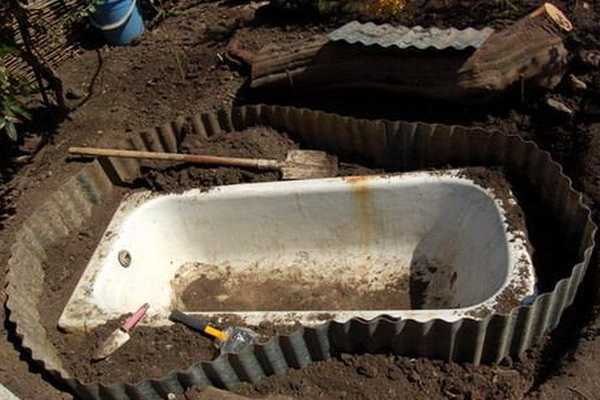


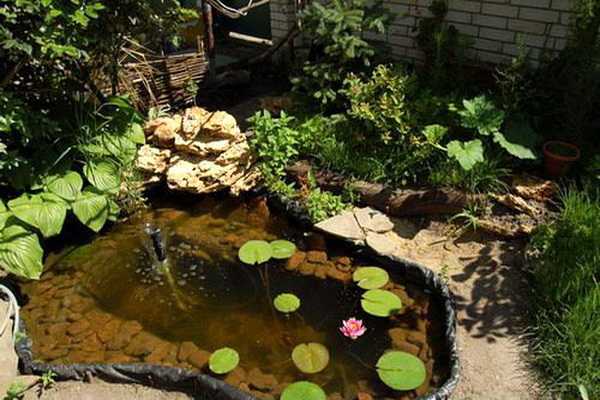
After the place for the swamp has been chosen, remove the soil to a depth of 30-40cm. Cover the resulting pit with a piece of durable polyethylene of such a size that excess material is obtained above the edges. Pierce the polyethylene at the bottom with a pitchfork, there should not be too many holes, the water should seep out, and not go away too quickly. Put a small layer of gravel or small pebbles on top of the polyethylene, lay the hose on top and bring it out above the soil surface. Punch a few holes every 10-15 cm along the part of the gravel. Plug the end of the hose, which is in the ground, with a stopper. Top up the hose with 5-8 cm gravel. In dry conditions, you will turn on the hose weekly until the topsoil is saturated with moisture.
Place the soil back on top of the gravel by removing weeds and adding compost or other organic fertilizer. After that, tamp and level the soil, cut off the protruding edges of the film and start planting moisture-loving plants. After planting, water them from above, then saturate the soil with moisture using a buried hose. When decorating a swamp, use not only stones, gravel, but also driftwood, mossy stumps; light disorder and neglect are quite appropriate here.
How to make a stream in the garden with your own hands (with photo)
The stream in the garden looks cute, but you need to plan everything carefully, think over not only the location of the stream and the shape of its banks, but also its design. If we forget about poetry for a while, then a stream is a water “strip” flowing between its beginning and end (source and mouth). An artificial stream can “flow out” from under a large boulder or a crack in it, a pile of stones, a picturesque bush will do, a waterfall may also be the source, technically it is just a masking of a hose in order to create the impression of a natural source. The end of the stream is most often a pond; it can disappear under a large stone or a group of stones, under which a reservoir with a pump is located. You can arrange one or both ends of the stream so that they “get lost” in the garden. Of course, the stream is man-made, but it is quite possible to make it “natural”, natural in appearance.
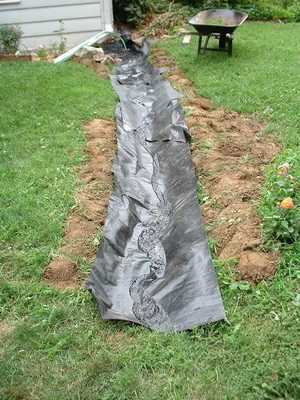

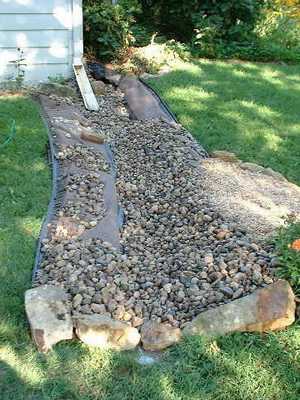
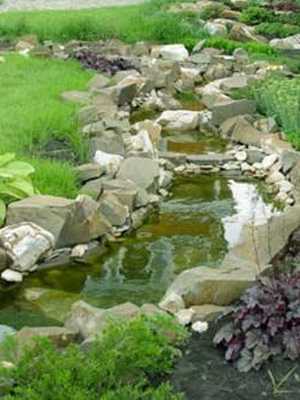
How to make a stream with your own hands, and most importantly – where to start? First of all – the project, then transferring it to nature. Be sure to draw the lines of the stream, its beginning and end on the plan, then transfer it to nature using a hose, changing its configuration until it seems ideal to you from all possible viewpoints. If you do not know how or do not like to work with plans on paper, you can use pegs and construction tape to immediately try to “draw” it on the ground. And then – dig a stream bed, tamp the earth, lay geotextiles (or fill the bed with a small layer of sand), then lay a black pond film, cover it with gravel or pebbles, carefully pour water, lay stones on the shore, hide the edges of the film and plant in the right places plants. Naturally, hosts, Siberian and marsh irises, loosestrife, astilbe, swimsuits, marigolds, ferns, sedges, etc. will look natural on the banks of the stream.
Before making a stream, purchase all the necessary materials:
- PVC film with a thickness of 0,5 mm or 0,8 mm in black or much more durable and reliable, although more expensive, butyl rubber (EPDM membrane), they can, if necessary, be glued and repaired using special tapes and adhesives;
- sand or geotextile as an underlayment and cushioning material;
- a submersible pump, which will be placed in the lower storage tank, the longer the stream, the louder it is planned to sound, the more power the pump needs;
- hose;
- stones for decoration of banks and riverbed;
- plants for planting near the stream and in the river itself.
The construction of an artificial stream is always based on the same principle: a pump pumps water from a reservoir pond, located at the lowest point of a water structure, to the highest place, from where the water flows down in accordance with the law of universal gravity and the slope of the site. In order for the pump to function, it is necessary to supply electricity to it, that is, to make a nearby street outlet.
See how magnificent the DIY streams look in the garden – here you can show all your imagination:
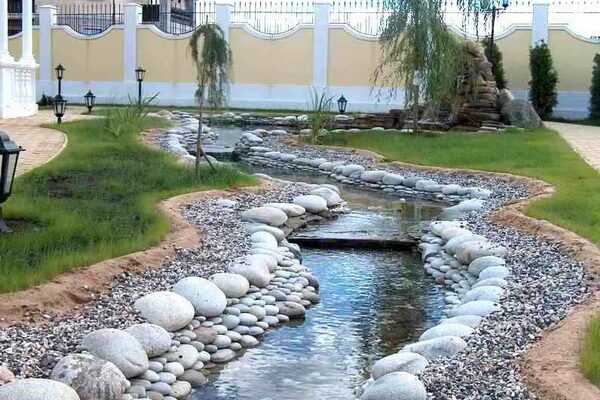
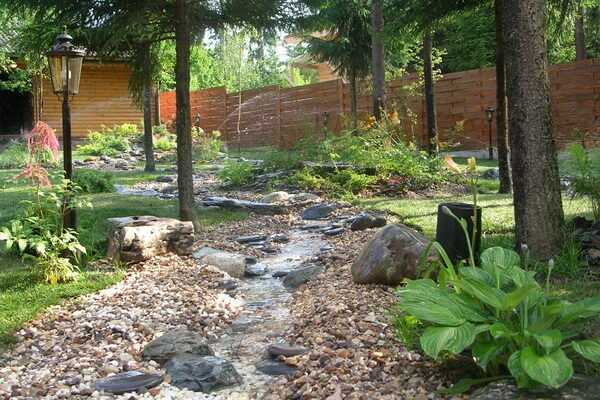
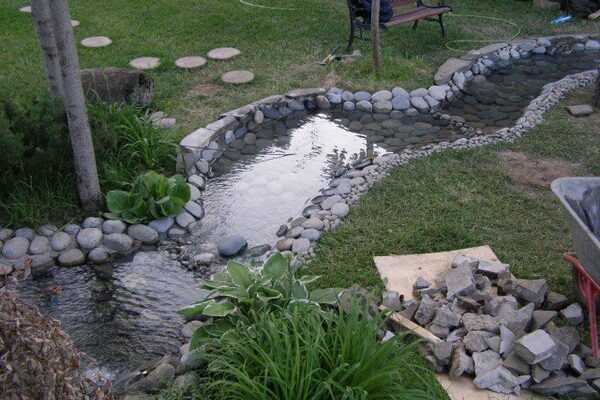
How to make a waterfall in the garden with your own hands (with photo)
Any waterfall in the garden with their own hands is arranged on the shore of a catchment pond, into which water will fall; a submersible pump is installed at the bottom of the same pond.
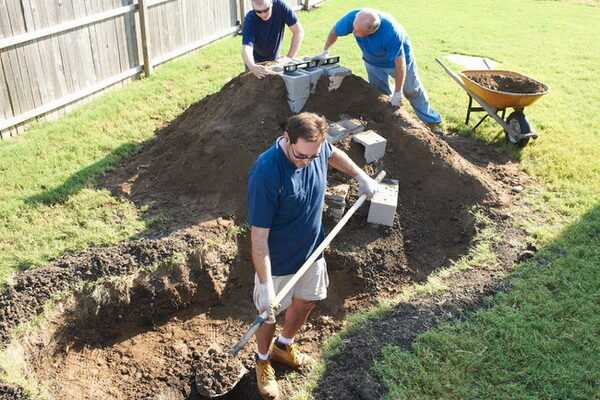

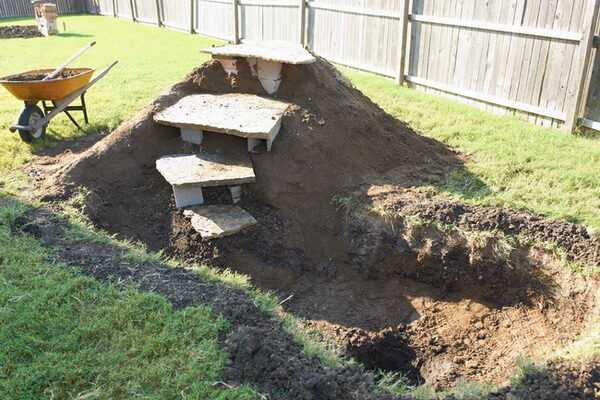
Before making a waterfall in the garden, you need to perform a coastal zone at the level of 15-30 cm from the water level, in which large stones will be laid. They must lie very stable, if this does not work without mortar, you can cement them. To increase the strength of the entire structure, you can first put a layer of mortar between the underlying material and the earthen wall, and then lay the BK-rubber, then again the mortar and the foundation stones of the waterfall on it.
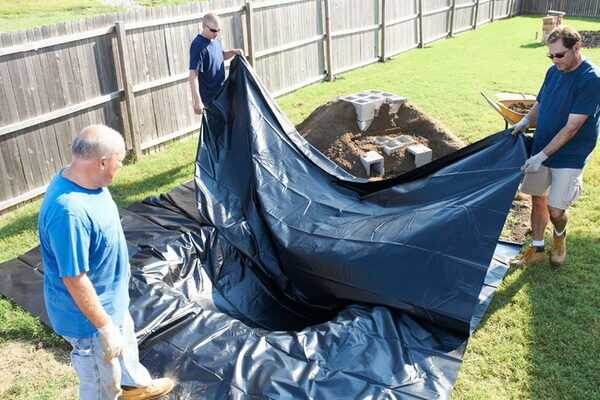
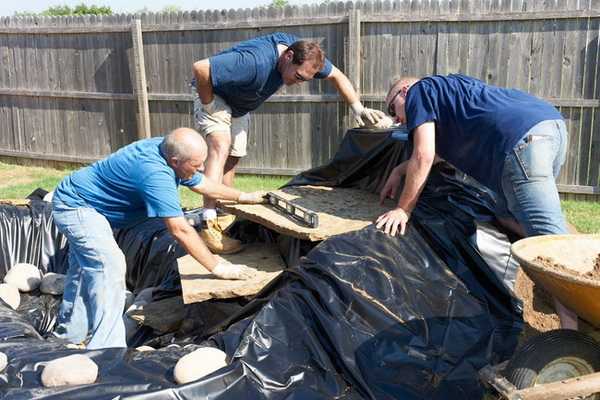
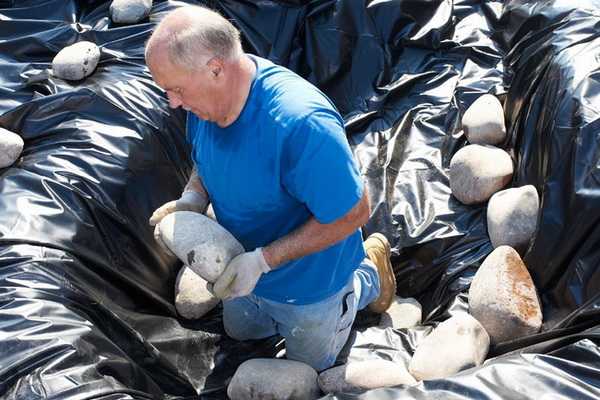
Then partially unwind the underlying material again and lay a flat stone on top of the foundation stones, from which water will fall, so that its edge protrudes above them, and the water drains into the lower reservoir. This stone needs to be cemented and checked with a watering can if everything is done correctly.
Now, in the process of making a waterfall in the garden with your own hands, you can build a waterfall environment by laying stones around the spillway stone, if necessary (to increase stability) attaching them to the lining material with mortar. To prevent water from seeping under the stones, a fold of the lining material should be laid at the height of the spillway and fixed. The banks of the reservoir pond are decorated with stones.
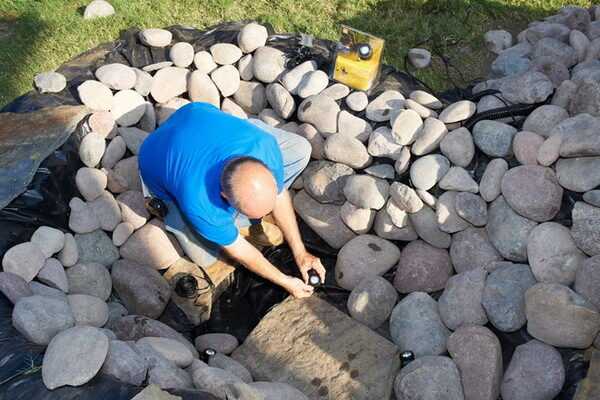
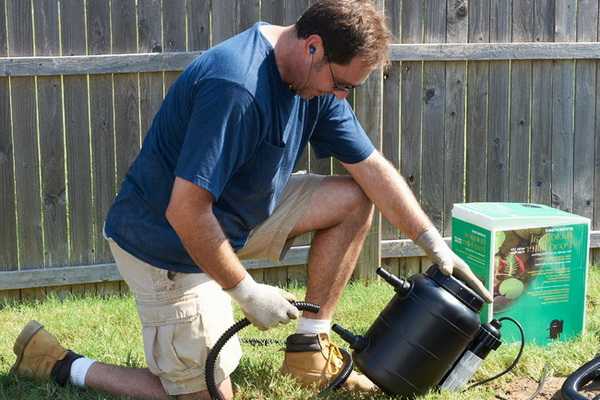
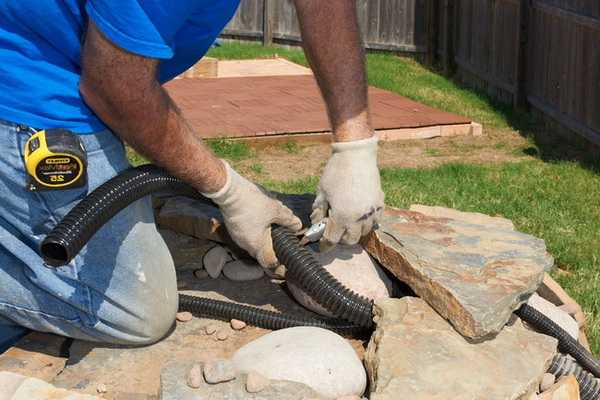
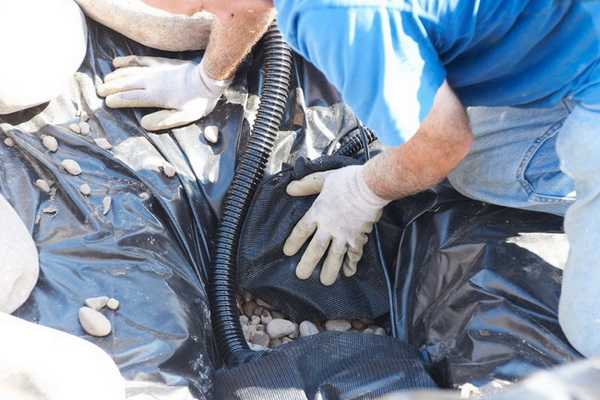
After the construction of the waterfall, you need to install a submersible pump, bury the flexible hose coming from the pump to a shallow depth, install a tap in the hose, if you intend to regulate the water pressure, and decorate it. After that, you need to turn on the pump and test the waterfall, if everything suits you, you can cut off the excess underlying material and mask its edges with low coastal plants or stones and pebbles.
You can build a “crying” waterfall on a limestone retaining wall, folded without the use of mortar, by laying a hose behind it, at the end of the hose the stream from it is divided into as many parts as there will be streams of the waterfall. At the bottom of the retaining wall, a water tank is made from a film or a small finished form is installed. Turning on the pump, we close the system, and the waterfall started working.
For the construction of a waterfall, you can use ready-made forms made of fiberglass, the appearance of which is close to natural stone, it is important to mask their edges by entering into the garden environment.
Below are photos of waterfalls in the garden, made with your own hands – ordinary and “crying”:

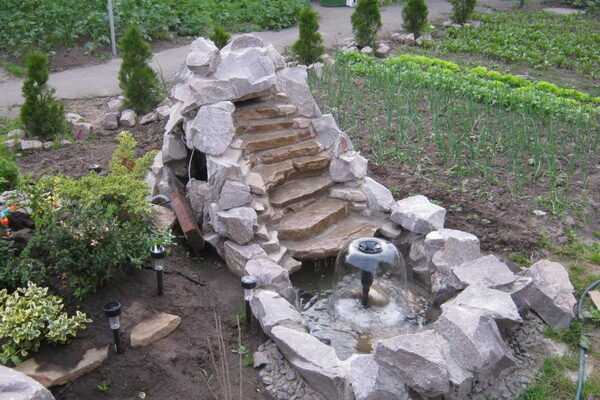
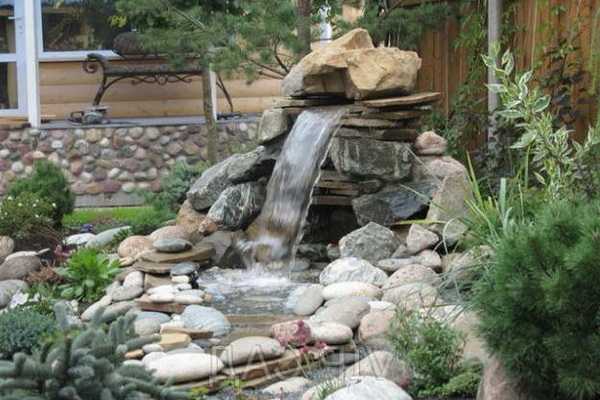
Making garden ponds with a photo: how to make a fountain with your own hands
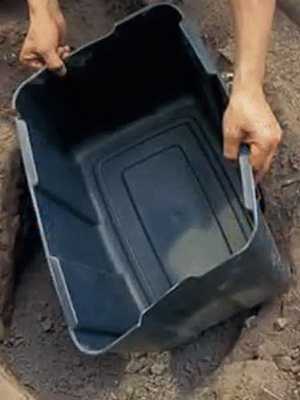
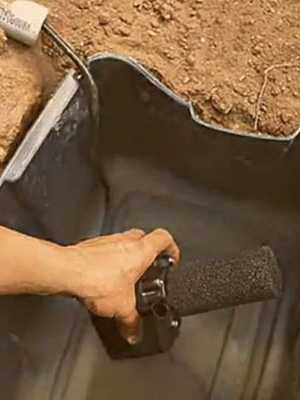
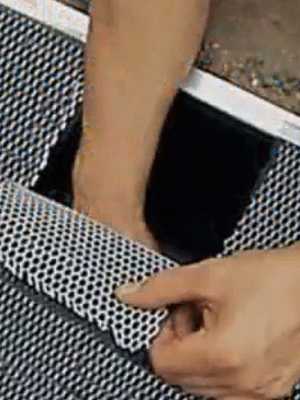
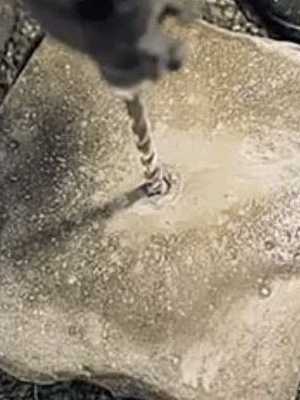
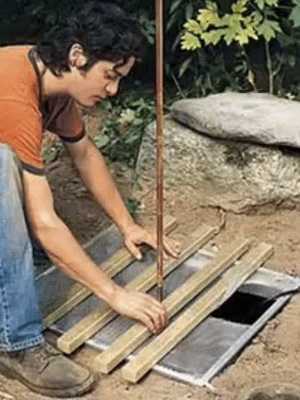
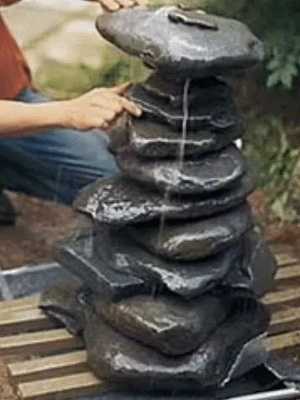
It is quite simple to make a fountain in the garden with your own hands. It consists of a pump and a spray nozzle through which water is ejected under pressure. The simplest sprinkler is like a watering can nozzle. Other nozzles are capable of creating jets of water, foam, a spherical dome, etc. You can also connect a submersible pump to statues, for example, to a metal heron with a hole in its beak or other decorations such as a jug or a huge boulder (natural or natural) with a drilled hole, the old one will do. millstone. Pressurized water will splash out or quietly drain from them into the reservoir. Before making a fountain in the garden, it is enough to dig a small container for water into the ground, decorate it and connect a pump that “drives” the water in a closed loop.

It is interesting to look at a mascaron in the garden, a decorative relief in the form of a human face or an animal’s head with an opening for the release of a stream of water. A stream of water from the mascaron falls into a small reservoir and is pumped back into the “open mouth”. Water structures built into the wall use space efficiently, are attractive, and emit a pacifying murmur. They are organic not only for Italian gardens, but for gardens of any size in any country.
In addition to a purely decorative effect, the fountain enriches the water with oxygen, and also increases the humidity in the immediate vicinity, which makes it more comfortable to stay around.
An autonomous pump, which will pump water only into the fountain, is turned on only as needed, turned off at night or upon departure.
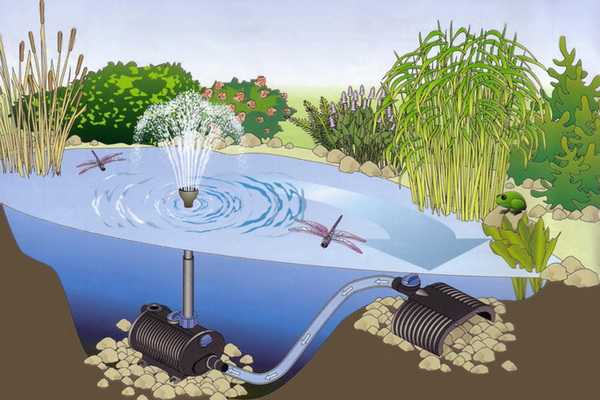
As you can see in the photo, for a fountain in the garden with your own hands, it is better to raise the pump slightly above the bottom of the reservoir, setting it on bricks. If the submersible pump is not completely submerged in water, it may fail. It is not only the appearance of the fountain and its sound that is important. The pressure of the water and, accordingly, its melody can be regulated.
Now that you have an idea of how to make a fountain in the garden with your own hands, you can try to apply your knowledge in practice.
